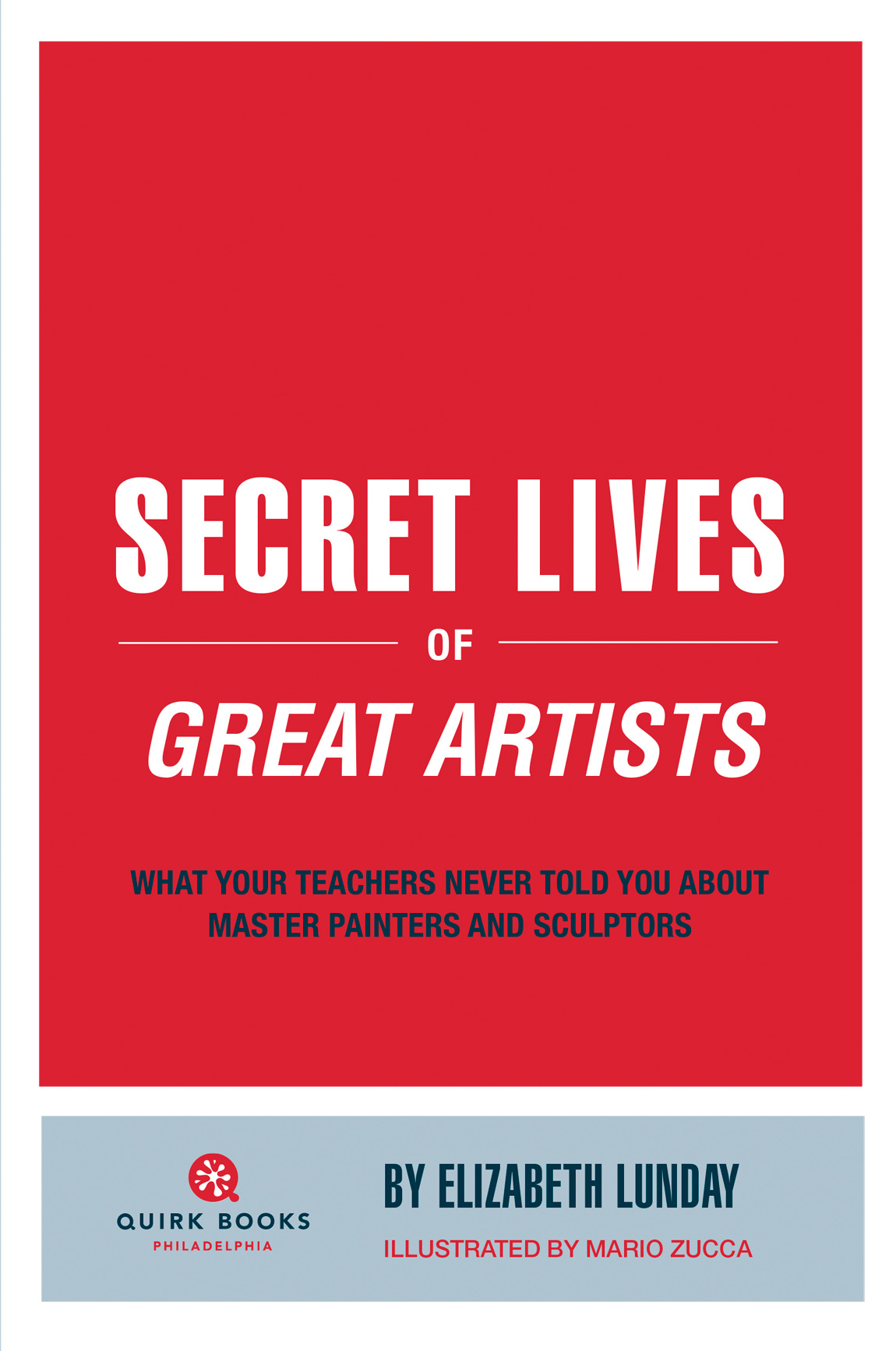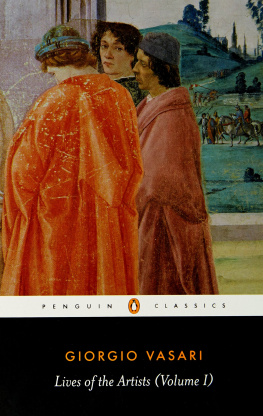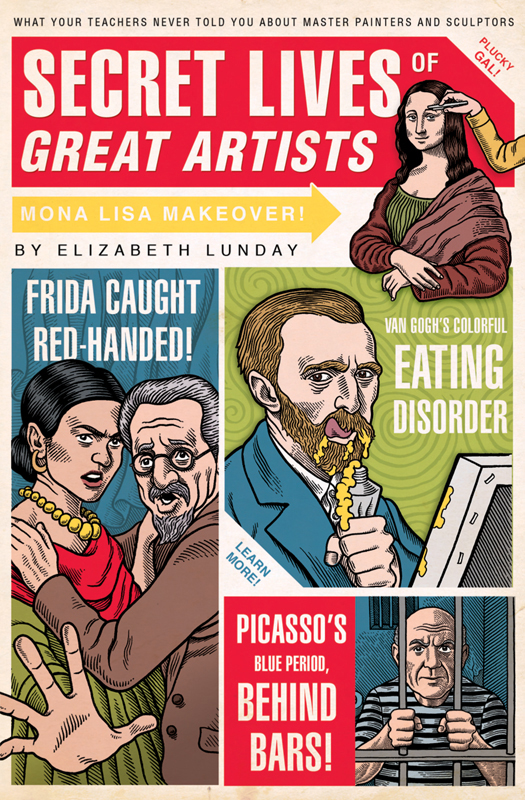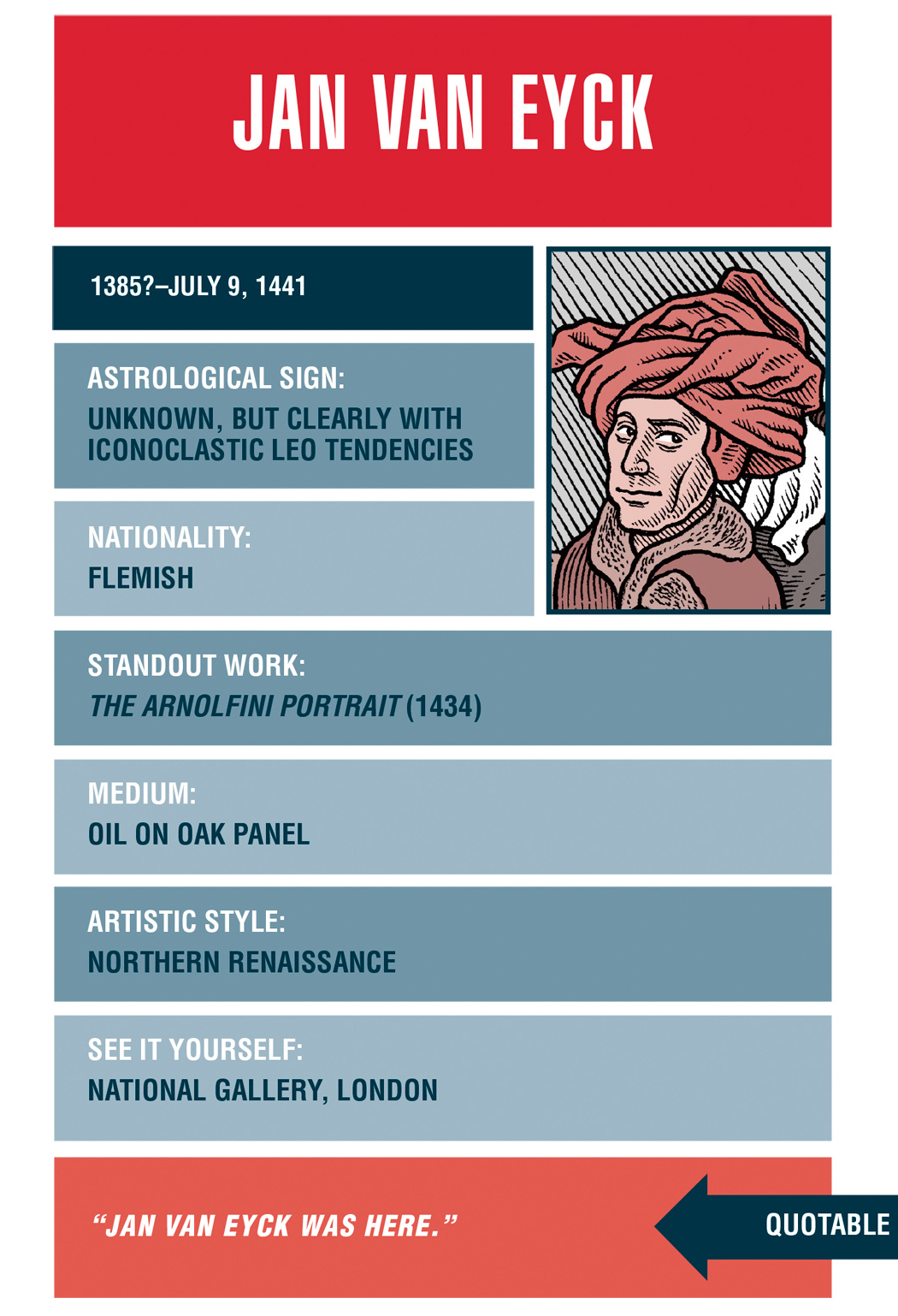Copyright 2008 by Quirk Productions, Inc.
All rights reserved. No part of this book may be reproduced in any form without written permission from the publisher.
Library of Congress Cataloging in Publication Number: 2008923885
eBook ISBN: 978-1-59474-745-8
Trade Paperback ISBN: 978-1-59474-257-6
Cover designed by Doogie Horner
Interior designed by Karen Onorato
Illustrations by Mario Zucca
Edited by Mindy Brown
Quirk Books
215 Church Street
Philadelphia, PA 19106
www.quirkbooks.com
v3.1

1385?July 9, 1441
1444May 17, 1510
April 15, 1452May 2, 1519
May 21, 1471April 6, 1528
March 6, 1475February 18, 1564
September 29, 1571July 18, 1610
July 15, 1606?October 4, 1669
Ca. October 31, 1632December 15, 1675
March 30, 1746April 16, 1828
August 30, 1748December 29, 1825
May 12, 1828April 9, 1882
January 23, 1832April 30, 1883
July 11, 1834July 17, 1903
July 19, 1834September 27, 1917
January 19, 1839October 22, 1906
November 12, 1840November 17,1917
November 14, 1840December 5, 1926
May 21, 1844September 2, 1910
March 30, 1853July 29, 1890
December 2, 1859March 29, 1891
July 14, 1862February 6, 1918
December 12, 1863January 23, 1944
December 31, 1869November 3, 1954
October 25, 1881April 8, 1973
July 22, 1882May 15, 1967
December 8, 1886November 24, 1957
July 7, 1887March 28, 1985
July 28, 1887October 2, 1968
November 15, 1887March 6, 1986
June 17, 1898March 27, 1972
November 21, 1898August 15, 1967
May 11, 1904January 23, 1989
July 6, 1907July 13, 1954
January 28, 1912August 11, 1956
August 6, 1928February 22, 1987

N ot all artists led tormented, tumultuous lives. Several, in fact, took perfectly ordinary paths, enjoyed successful careers, and, in the fullness of time, died.
Yet many of the most famous artists staggered from one crisis to another. Rembrandt watched all his worldly possessions disappear in a humiliating bankruptcy. Jacques-Louis David nearly lost his head during the French Revolution. And Andy Warhol got himself shot by a radical feminist. Several developed serious addictions (yes, you, Dante Gabriel Rossetti), a few had criminal records (how do you plead, Henri Rousseau?), and at least one regularly beat up his wife. (Hey, Edward Hopper, its no excuse that she gave as good as she got.)
Still, not all artists had it tough. Marc Chagall grew up in a close-knit family bound by love and faithunlike Leonardo da Vinci, who was illegitimate; Jackson Pollock, whose family took a head-first plunge into poverty; or Georgia OKeeffe, who watched her father succumb to chronic alcoholism and her mother to tuberculosis.
Nor did they all have dramatic love affairs. Jan Vermeer adored his wife (or seems to, for the couple had fifteen children). In that regard he is wholly different from Claude Monet, who started sleeping with his second wife while his first was dying of cancer, or Pablo Picasso, who had a hard time keeping up with all his mistresses. Diego Rivera and Frida Kahlos complex relationship was fraught with its fair share of drama, including two marriage ceremonies and the assassination of a twentieth-century political figure. Of course, a few artists avoided the issue altogether: The reportedly celibate Michelangelo believed abstinence extends the human lifespan, and he lived to be eighty-eight.
You cant even claim that all artists are crazy. Its true that Edvard Munch thought strangers on a train were police sent to spy on him, and Vincent van Gogh had that whole ear thing, but theyre the exceptions. Paul Czanne, with his morbid fear of being touched, and Salvador Dal, with his unusual sexual proclivities, were probably not insane, they were just odd.
For this book, I collected the most outrageous tales about major artistsall the good stuff your art history professors left out. Of course, I had to be selective. Great art didnt start with the Renaissance or end with the death of Andy Warhol, and it isnt limited to the work of these thirty-five individuals. I chose the artists youre most likely to recognizethose whose paintings and sculptures clog our daily lives, showing up on mouse pads, pencils, tote bags, and posters.
Youll learn which artist was convicted of murder, which died of syphilis, and which signed death warrants. Youll discover which two artists have Broadway musicals based on their paintings, and who made a guest appearance on The Love Boat . Youll find out who suggested that firing a gun was an acceptable method of attracting a waiters attention and who held orgies in his living room. Along the way youll encounter a few incompetent kings, a couple of corrupt popes, a horde of nefarious Nazis, and at least one notorious Communist. Not all of the stories have happy endings, and you may learn that your favorite artist was an adulterer, a cheat, a cad, or worse.
But one thing is for sure: Youll never view art the same way again. On your next museum visit, youll entertain friends and annoy tour guides with the dirt on the illustrious artists whose artworks fill the galleries. With your new perspective on Michelangelos nudes, Monets water lilies, and Warhols Marilyns, youll be quick to contribute a witty quote to pretentious cocktail party conversation or add a scandalous anecdote to a boring term paper.
Of course, dont let all the scuttlebutt get in the way of your appreciation of art. A person can paint like a master and still be an ass. On the other hand, knowing the trials and traumas that many artists endured can enhance your understanding of their ultimate success, and a biographical detail may shed new light on a confusing composition.
In the end, maybe we should be glad most artists died of something other than boredom. Many of the best lived on the edge of chaos, where great art is born.
A first glance, The Arnolfini Portrait seems unremarkable. Its a cozy domestic scene, complete with fluffy-tailed dog and dirty shoes. Only on closer inspection do the details come to life: the reflections sparkling on a chandelier, shadows falling on a carved wooden finial, cherries blooming on a tree outside. And when your eye reaches the rooms back wall you notice an ornate Latin script that reads, Jan van Eyck was here. 1434.
It is a signatureone of the first artists signatures in history. For a painter to draw such attention to himself was unprecedented. Artisans painted anonymously to the glory of God, and they didnt worry about things like shading, perspective, or depth. Then out of the blue comes this purely secular painting of a man and a woman with their dog. It has shadows, three-dimensional representation, and a signature. This painting wasnt just new, it was revolutionary.





![Robertson Bruce - Lives of the artists: [masterpieces, messes (and what the neighbors thought)]](/uploads/posts/book/163588/thumbs/robertson-bruce-lives-of-the-artists.jpg)







